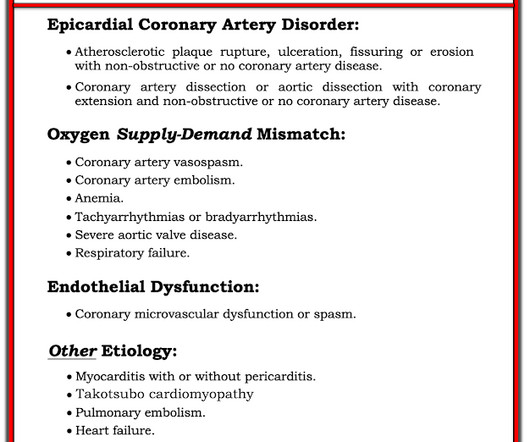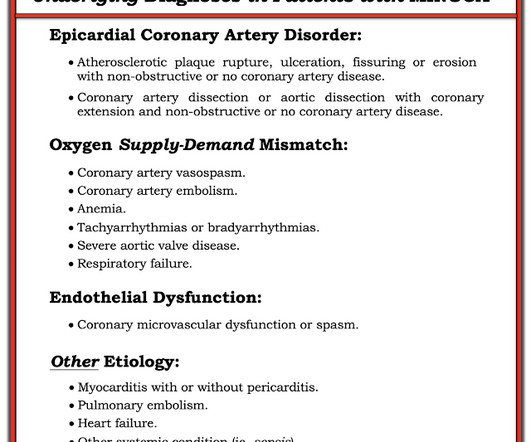What does the angiogram show? The Echo? The CT coronary angiogram? How do you explain this?
Dr. Smith's ECG Blog
NOVEMBER 15, 2023
MINOCA may be due to: coronary spasm, coronary microvascular dysfunction, plaque disruption, spontaneous coronary thrombosis/emboli , and coronary dissection; myocardial disorders, including myocarditis, takotsubo cardiomyopathy, and other cardiomyopathies. MINOCA I do not have the bandwidth here to write a review of MINOCA.










Let's personalize your content